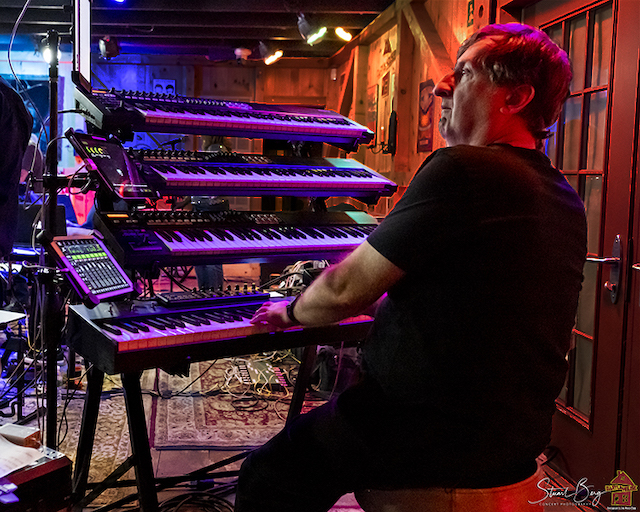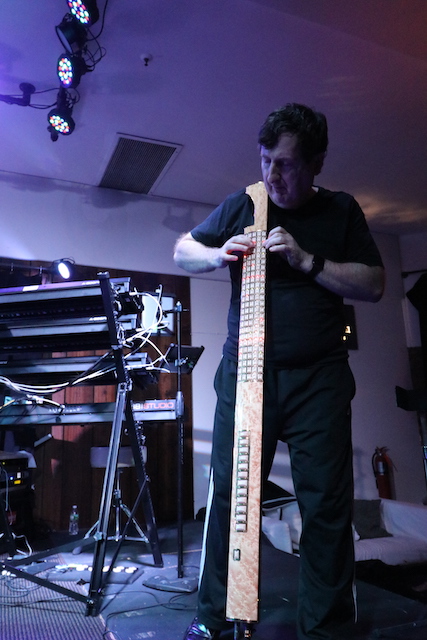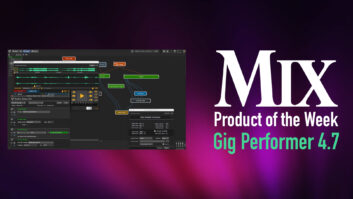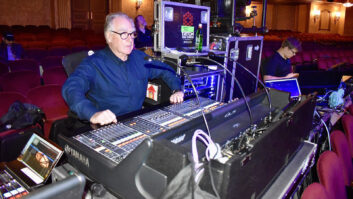
Westchester, NY—December 2018… David Jameson was at a crossroads. He had long been a fan of prog rock, a genre unafraid of big, complex music played on big, complex systems. “I was a Rick Wakeman/Keith Emerson wannabe, with big stacks of keyboards everywhere,” he declares. Now, Jameson, who had long ago jettisoned all the heavy hardware in favor of using Deskew Technologies’ Gig Performer software for his instruments and processing, was preparing for a tour of Japan, playing keyboards and an Eigenharp controller with The Security Project. Some of his bandmates had toured with British prog greats like Peter Gabriel and King Crimson.
Jameson knew he could take his sounds with him on his laptop, as they were all in Gig Performer. But he would not be using his own keyboards, knobs, buttons, and sliders. A nightmare vision haunted him of spending sound checks desperately reprogramming to connect the controllers to his instruments running in Gig Performer. Everything would be so much easier if the controllers and the instruments could be decoupled so that the connections were more generic and easier to reestablish each time.
Jameson chose a third option, one open only to him and one other person on the planet: He added a new feature, the Rig Manager, to Gig Performer. As it happens, David Jameson is the co-founder of Deskew Technologies and, along with partner Nebojsa Djogo, writes all of the code for the program. The Rig Manager worked perfectly for him in Japan but Jameson went beyond solving his problem. Extrapolating from his need, he structured the Rig Manager to solve the more generalized issue of decoupling (called “indirection” in programmer-speak), making Rig Manager a more flexible and powerful tool suitable for solving many different performing tasks.
Gig Performer represents the intersection of Jameson’s dual worlds of music and computer science. Two years of trying to be a musician had convinced him it might be easier, or, at the least, offer a firmer financial future, to earn a Ph.D. in computer science from Trinity College in Dublin, Ireland. After that came 13 years as a researcher at IBM, including founding the IBM Computer Music Center, and three years working at a hedge fund.

Years had passed since Jameson had performed regularly but finally he was ready to pick it up again. This time, with the rise of computer tools like samplers and virtual instruments, hauling around a truckload of gear no longer seemed reasonable or necessary. Unfortunately, the best-known software plug-in host gave him fits. Jameson shakes his head thinking back to his struggles trying to use the program and recalls disgustedly, “It was very buggy in very bizarre ways.” Jameson built his own plug-in host using the superb Max/MSP platform but found it getting less stage-reliable as new versions came out. Then Jameson and Djogo, a guitarist, decided to create Gig Performer.
Today, Jameson uses Gig Performer when he performs with The Security Project (playing the music of Peter Gabriel), Beyond the Wall (a Pink Floyd tribute band), and with Steely Dan tribute band Reelin’ in the Years. Jameson’s rig, which varies some from band to band, is built around a weighted-keyboard MIDI controller and three identical, unweighted Roland keyboard controllers, all of which are populated with sliders, knobs, and buttons. Then there’s the Eigenharp, an alternative controller with keys sensitive in three dimensions. He also uses a MIDI footpedal controller, an iPad running the Lemur app to control Gig Performer, another iPad running a sheet music app that sends program changes to change Gig Performer rackspaces for the start of each song, and, finally, the laptop that runs Gig Performer.
In Gig Performer, Jameson uses one rackspace (a complete configuration with all instruments, processors, and connections-for each song) and rackspace variations (sets of parameter values for a rackspace) for changes within a song. “I don’t like to do manual program changes during a song,” notes Jameson. “Once you do that, you’re being a technician, not a musician.” To keep his focus on performing, the Lemur app handles only the few parameters Jameson needs to vary during a show, while a more complete set of parameters is implemented on rack panels in Gig Performer for editing in the studio.
Jameson’s prog keyboards present vastly different demands to Gig Performer than Djogo’s guitar, and Jameson and Djogo both cite a useful creative tension that comes from their differing perspectives. With the complexity of Jameson’s setup, a streamlined workflow is paramount, and shortcuts and ease of use are key. Djogo insists the program must remain reliable and stable and make low CPU demands, even when new features are introduced.
Though Gig Performer is maturing, the evolution never stops: on his current gigs, Jameson is rolling out new features destined for the next version of Gig Performer. He fully recognizes the great value of his roadwork to the program. After all, who will understand the needs of performing musicians better than someone who relies wholly on Gig Performer in his own performances?







